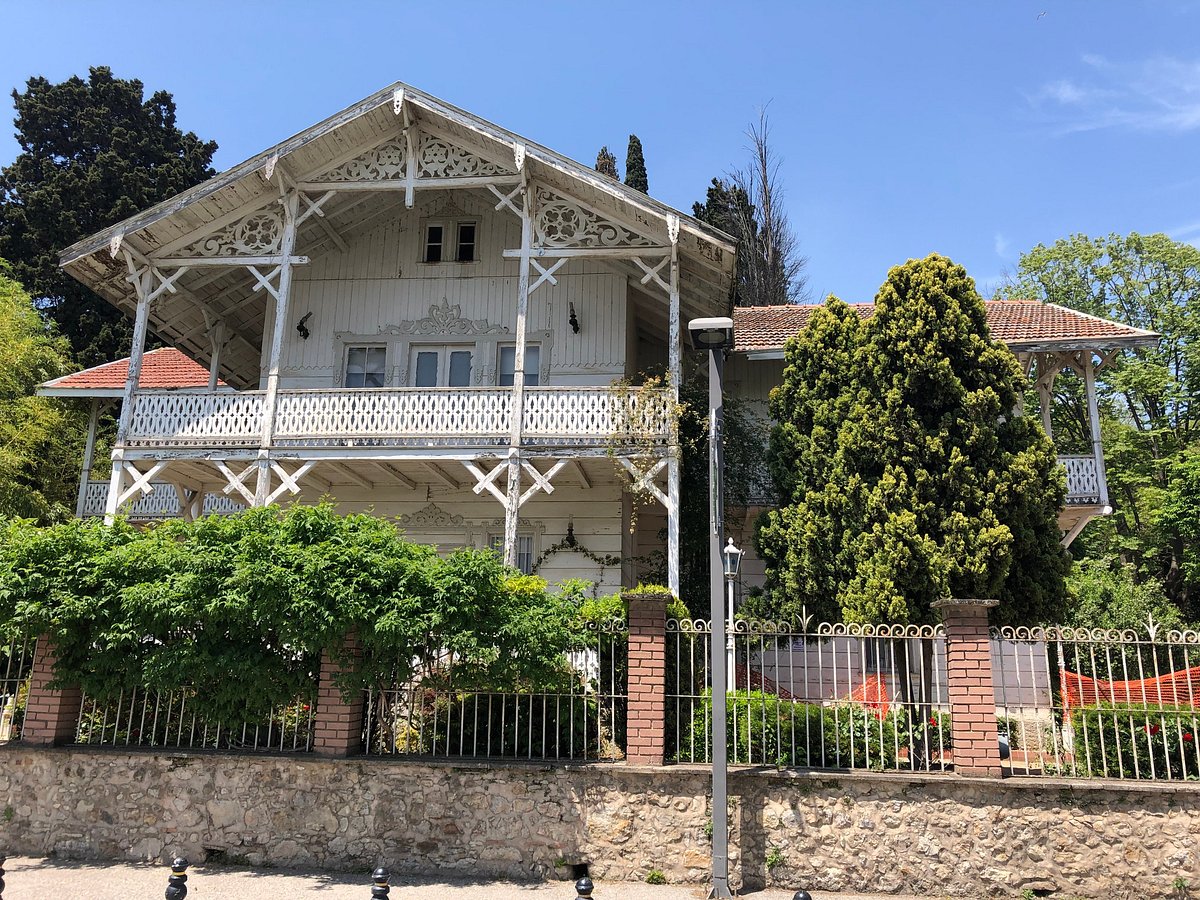Surely, we all know the painting The Tortoise Trainer, don't we? That moment when the patient, wise dervish plays his ney for the tortoises at his feet... But have you ever wondered about the magical place where the genius who created this immortal work found his inspiration, accompanied by the sound of waves and the scent of the sea? We're taking you right there, to the Osman Hamdi Bey House and Museum in the charming coastal town of Eskihisar, Kocaeli, where history and art intertwine. This is more than just a museum; it's a painter's studio, an archaeologist's sanctuary, and the home where an intellectual's dreams were nurtured.
In this guide, you'll find a complete itinerary covering what awaits you at the Osman Hamdi Bey House and Museum, the secrets behind that famous painting, and a journey from the adjacent centuries-old castle to the other hidden treasures of Gebze.
An important note: This temple of art and history is currently undergoing a comprehensive restoration by the Ministry of Culture and Tourism of the Republic of Turkey. Is this bad news? Not at all! This work is preparing the museum to become a prestige museum worthy of its name, going beyond a simple renovation . Just like the Istanbul Archaeology Museums founded by Osman Hamdi Bey, this place will be reborn as a cultural center that reflects his legacy in the most magnificent way. So, read this article as a travel guide and start planning now to be one of the first visitors when this unique place reopens its doors!
Tour the Eskihisar home and studio of the painter of The Tortoise Trainer
Located just west of the center of Eskihisar, on a hill parallel to the coast, this mansion greets you with an architecture that transports you to another world at first glance. Built in 1884, this structure is much more than a summer house; it is the stone and wood reflection of Osman Hamdi Bey's personality and intellectual world.
The Architecture and Soul of the Mansion
Osman Hamdi Bey was not only the owner of this mansion but also its architect. The Western culture he adopted during his law and painting education in Paris is reflected in the mansion's architectural plans. The fact that many of the materials used in the construction of the building, which bears traces of French architecture, were imported from abroad is proof of his cosmopolitan vision and aesthetic understanding.
However, what makes this house truly special are the artist's personal touches. When you step into the mansion, you will notice the floral patterns on the wooden doors. These are not ordinary decorations; they are works of art from Osman Hamdi Bey's own brush, each as valuable as a painting. When you imagine what an artist's home might look like, this is exactly what comes to mind: art infused into every fiber of his living space. This house is not just a building that contains works of art; it is a work of art in itself. It is like an architectural self-portrait that combines Osman Hamdi Bey's Western taste, his identity as a painter, and his attention to detail.
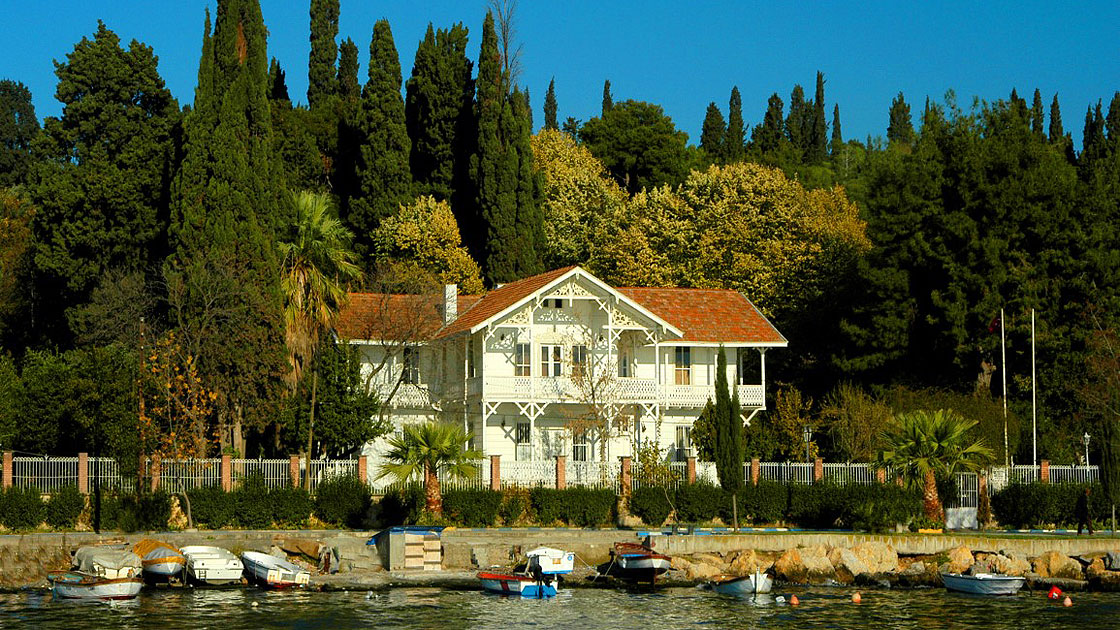
More Than a Studio: Walls That Witnessed History
Osman Hamdi Bey spent his summers in this mansion for 26 years. For him, it was not just a place of rest but also his most productive studio. This complex, consisting of a painting studio, a boathouse, and outbuildings, was where he brought his most famous paintings to life. If you close your eyes, you can almost imagine him at his easel, brush in hand, with the Marmara breeze blowing through.
But the testimony of these walls is not limited to art. The mansion also witnessed important moments during the founding years of the Turkish Republic. The building, where the Western Front Commander İsmet Pasha stayed for a few days during the War of Independence, also hosted Mustafa Kemal Atatürk himself in 1933. These visits elevate the mansion from an artist's home to the status of a national heritage site. Although it suffered misfortunes like a fire in 1945 that burned down the wooden upper floor , it rose from its ashes to continue preserving the memory of both art and history. Opened as a museum in 1987, the building is preparing to welcome its visitors with a much richer experience once the restoration is complete.
Examine information and replicas related to the artist's life and works
When you step through the museum's doors, you will be greeted by the multifaceted world of not just a painter, but a true Renaissance man. Osman Hamdi Bey was a genius too great to be confined to a single identity: he was a painter, an archaeologist, a museologist, and an educator .
[Here, a high-resolution, vibrant image related to the interior of the museum and replicas of paintings will be placed]
A Renaissance Man: Who Was Osman Hamdi Bey?
Born as the son of Grand Vizier İbrahim Ethem Pasha, Osman Hamdi Bey was the face of the Ottoman Empire opening up to the West. His years in Paris shaped him not only as an artist but also as a modern intellectual.
Archaeologist: He is considered Turkey's first archaeologist . One of his greatest achievements was the excavation he conducted in 1887 at the Royal Necropolis of Sidon in Lebanon. During these excavations, he unearthed the world-famous Alexander Sarcophagus, considered one of the masterpieces of archaeology and today the most valuable piece in the Istanbul Archaeology Museums.
Museologist and Educator: Osman Hamdi Bey is the founder of modern Turkish museology . He transformed the Imperial Museum (Müze-i Hümayun, today's Istanbul Archaeology Museums), which he directed for 29 years, into one of the world's leading museums. Not only that, but he also laid the foundation for art education in the country by establishing Turkey's first fine arts school, the Sanayi-i Nefise Mektebi (today's Mimar Sinan Fine Arts University) .
Painter: Amidst all these demanding duties, he never gave up painting. In an era when figurative painting was considered a sin in Islam, he broke new ground as the first artist to use figurative compositions in Turkish painting. In his works, he combined the mystery of the East with the technique of the West, creating a unique, spiritual style.
A Walk Inside the Museum
In its pre-restoration state, the museum offered visitors an invaluable glimpse into both the private and public life of Osman Hamdi Bey. When it reopens, this rich collection is expected to be displayed with an even more enhanced presentation. Inside, you can see the artist's personal belongings, intimate photographs with his family, and of course, full-scale, high-quality replicas of his masterpieces such as A Lady of Constantinople and The Arms Dealer. Through these objects and paintings, you step into the world of this great master who merged the discipline of a statesman with the sensitivity of an artist.
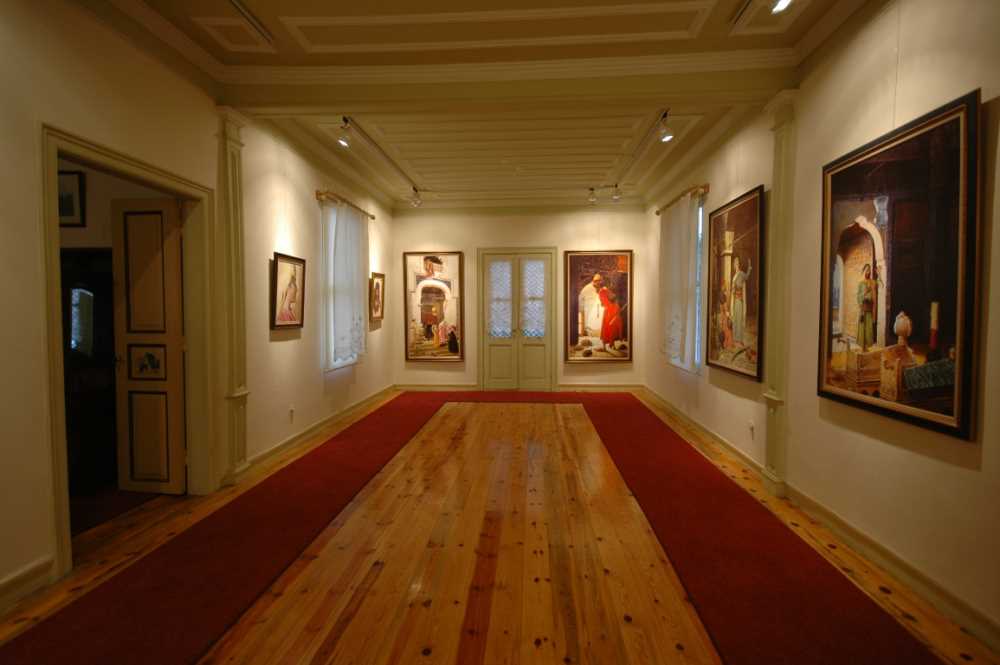
Unveiling the Secrets of The Tortoise Trainer
Of course, the soul of this museum is shaped around the painting The Tortoise Trainer. So, what does this painting tell us? The most powerful interpretation agreed upon by art critics is that the painting is a profound allegory.
The weary but determined man in dervish attire is Osman Hamdi Bey himself. The ney in his hand and the nakkare (a type of percussion instrument) on his back represent art and science. The hard-to-train tortoises in front of him, busy eating leaves, symbolize the slow-moving Ottoman society and bureaucracy that resisted change. The setting of the painting, the Green Mosque in Bursa, with its crumbling tiles and neglected walls, is a reflection of the dilapidated institutions the artist was trying to reform. In short, with this work, Osman Hamdi Bey depicted the fatigue and struggle of an intellectual trying to modernize a backward society through art and reason, with patience.
There is a common belief that this famous painting was created in this mansion in Eskihisar. However, the reality is a bit different. Research reveals that Osman Hamdi Bey painted this work in Bursa, probably in a room on the upper floor of the Green Mosque. It is even thought that he drew inspiration from an engraving he saw in an 1869 issue of the French travel magazine Le Tour du Monde. Does this diminish the importance of the house in Eskihisar? On the contrary, it adds a deeper meaning. The canvases may not have been painted in this house, but the thoughts that gave the painting its soul, the frustrations with a slow-moving society, and the patient determination to struggle were undoubtedly products of the intellectual fermentation the artist underwent during his 26 summers here. So, while the brush may have met the canvas in Bursa, the place where the spirit of The Tortoise Trainer was born, the sanctuary where it found its inspiration, is this very mansion.
Enjoy the gulf view from Eskihisar Castle, next to the museum
Just a few steps away from Osman Hamdi Bey's modern 19th-century mansion, a structure awaits that will take you much further back in time: Eskihisar Castle. The juxtaposition of these two buildings turns a visit to the area into an opportunity to travel to two different eras with a single ticket.
A Step into a Time Tunnel
Eskihisar Castle is a centuries-old guardian built to protect the strategic crossing point and harbor of the Izmit Gulf. Its history dates back to the Byzantine Empire. The first person to mention the castle in writing was the Byzantine historian Georgios Akropolites in 1241 . This indicates that the castle has a history of at least 800 years. Witnessing important historical events such as the Battle of Pelekanon, the castle was also used by the Ottomans after the Byzantines and underwent extensive restoration in 1998.
Could it be a coincidence that Turkey's first archaeologist, a man who dedicated his life to uncovering the treasures of the past, built his modern summer house right at the foot of an ancient castle? Of course not. This conscious choice is a reflection of Osman Hamdi Bey's life philosophy. He was a bridge-builder who professionally excavated and preserved the past (the castle) while personally striving to build the future (the mansion) with his art and science. Therefore, that short walk you take from the castle to the museum in Eskihisar is actually a symbolic journey in Osman Hamdi Bey's mind, between the ancient heritage of Anatolia and the modern Turkey he dreamed of.
What Awaits You at the Castle?
When you climb the castle walls, you will first be greeted by a breathtaking panoramic view of the Izmit Gulf. Watching the sea from the ramparts, especially at sunset, offers an unforgettable experience. However, Eskihisar Castle impresses visitors not only with its view but also with its living texture. Today, the castle continues to keep art alive within its historic walls by hosting various cultural events such as concerts, theater performances, and even an open-air cinema in the summer.
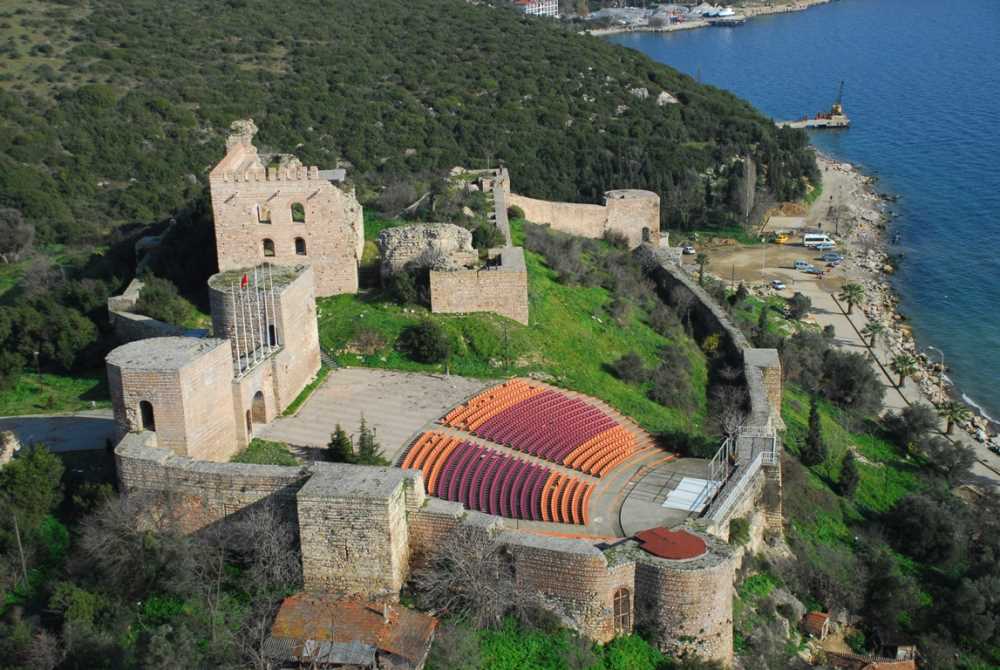
While You're Here: Other Places to Explore in Gebze
After witnessing the world of Osman Hamdi Bey and the history of Eskihisar, you can crown your trip with the other beauties of Gebze. Here are a few suggestions:
For Nature Lovers
Ballıkayalar Nature Park: Located just a few kilometers from Gebze, this valley is a first-degree natural protected area. With its lush nature, various waterfalls, and canyon, it is a paradise for trekking, rock climbing, and camping enthusiasts. It is truly surprising to find such a natural wonder so close to Istanbul. To discover Kocaeli's unique nature hiking routes, you can visit Kocaeli Nature Walking Routes.
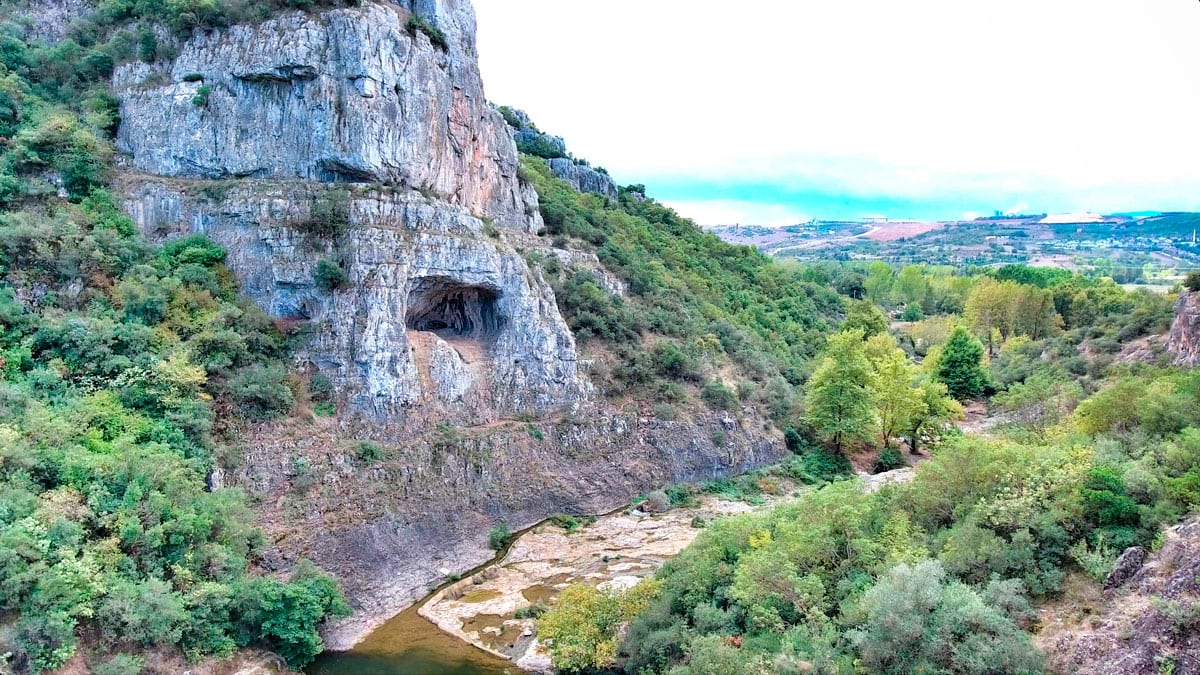
For History Buffs
Çoban Mustafa Pasha Complex: Built in the 16th century by Çoban Mustafa Pasha, one of the important statesmen of the Suleiman the Magnificent era, this complex is one of the finest examples of Ottoman architecture. This magnificent group of buildings, consisting of a mosque, tomb, madrasa, bath, and soup kitchen, will take you on a journey through history. For more information on Gebze's rich Ottoman heritage, you can visit our page Gebze's Ottoman Heritage.
Hannibal's Tomb: The memorial tomb of the Carthaginian commander Hannibal, considered one of the greatest military geniuses in history, is in Gebze. The story of this legendary commander, who ended his life by drinking the poison in his ring to avoid being captured by the Romans, will add an ancient drama to your trip.
For Families and Everyone
Faruk Yalçın Zoo and Botanical Park (Darıca): Located very close to Gebze, this park is one of Turkey's most modern zoos, hosting the largest number of species. With over 250 animal species and more than 400 plant species, it is a wonderful day-out alternative, especially for families with children.
Frequently Asked Questions (FAQ)
Is the Osman Hamdi Bey Museum open? No, the museum is currently temporarily closed for a comprehensive restoration and reorganization project by the Ministry of Culture and Tourism. It will serve as a prestige museum when it reopens. We recommend checking its current status before planning a visit .
How much is the entrance fee for the Osman Hamdi Bey Museum? Before the restoration, the museum could be visited free of charge. However, there is a possibility that this may change after it is reorganized by the Ministry. It is best to follow official sources for current fee information when it reopens .
Who was Osman Hamdi Bey in brief? Osman Hamdi Bey (1842-1910) was a multifaceted intellectual who lived in the late Ottoman period. He was Turkey's first archaeologist, the founder of modern Turkish museology, an educator who laid the foundation for Mimar Sinan Fine Arts University, and the painter of masterpieces like The Tortoise Trainer .
Bibliography
For more in-depth and official information about the life, works, and legacy of Osman Hamdi Bey, you can visit the official website prepared by the Ministry of Culture and Tourism of the Republic of Turkey: https://www.kulturportali.gov.tr/portal/osman-hamdi-bey


 English
English Türkçe
Türkçe